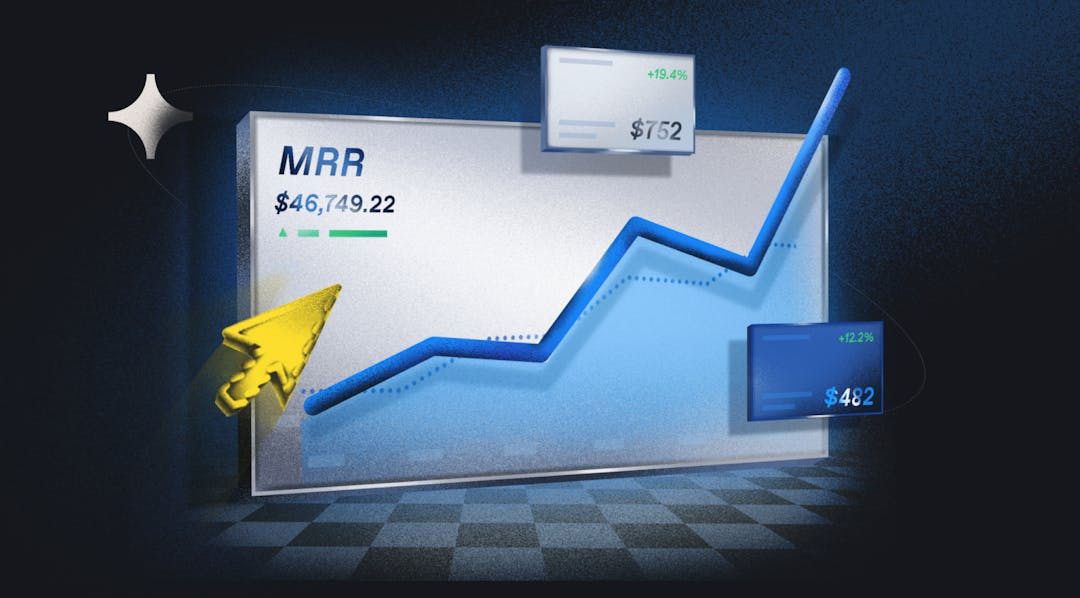So you’ve built a sales strategy that, from top to bottom, from development to launch, looks just about perfect — buyer personas are defined down to the brand of T-shirt they’d normally wear, very good alignment on sales goals has been established through the company, and your understanding of your sales funnel is solid. Even if you get it all right, there’s still one question that you can’t answer: “What will revenue performance be like?”
The only way to answer that question is to optimize each of your would-be customers’ every interaction with your company and product via a process known as revenue performance management. By responding to the behavior of real customers and adapting sales and marketing approaches accordingly, you can find out, in detail, what drives your product’s revenue performance and drive it upward at a much sharper rate.
What is revenue performance
Let’s not get ahead of ourselves; revenue performance management represents a fairly complex combined approach to both marketing and sales, and there are definitions within definitions to be parsed before we get to the nitty-gritty.
Revenue performance is the analysis and improvement of sales marketing efforts using revenue as the key performance indicator. It’s intended to reveal two things:
- Which of your sales and marketing approaches/tactics drive revenue — this can be determined with a subscription reporting platform for sales and marketing.
- Which sales and marketing approaches hold the company back
What is revenue performance management?
Revenue performance management (RPM) is a systematized approach to optimizing a company’s sales and marketing interactions with potential buyers across a revenue cycle by transforming their approach to people, processes, and technology. Done correctly, it can have a hugely positive effect on marketing ROI and result in considerable top-line growth.
A data-intensive approach, RPM requires collecting and analyzing huge amounts of data to learn what about your approach to sales and marketing drives or impedes revenue. Implementing revenue performance management typically leads to alterations to the tools used by your teams and improvement in communication between them.
Why your business needs revenue performance management
Whether you’re running a small business or attempting to trick out the management systems of a 100+ employee behemoth, the key to effective marketing and sales strategies concerns the constant measurement and analysis of customer behavior and how it relates to your sales funnel.
RPM helps your business maximize its marketing ROI by taking advantage of the vast amount of data a SaaS company typically has on their customers. The more intensively you can respond to that data, the more actionable insights you can mine from it and the more conversions you’ll find you’re getting per dollar of marketing investment.
RPM also helps you get the most out of your existing customer base. A lot of RPM advice revolves around process optimization to help you score new business. However, at its best, a holistic approach to RPM will also cover things like providing better upsell offers and customer support, helping you maximize your ROI from existing customers as well.
While implementing RPM can seem like quite an undertaking, there’s good news: it can also be done via an automated solution. Whether it’s within the scope of your resources, well, that’s another question. But tapping into this data and using it to shape an automated marketing platform (to automate lead generation, scoring, and nurturing) can take you to another level of success altogether.
How to measure revenue performance (4 steps)
Even if your business isn’t big enough to build its own automated marketing platform yet, you can still be driving much more top-line growth from your marketing and sales strategies.
Follow these steps to transform the interactions your customers have with your company along the sales cycle, and, powerfully improve your bottom line.
1. Gather data
It bears repeating: data, and your ability to analyze it, will make or break any attempt at revenue performance management.
First, look to collect as much raw customer data as you can. Forms are your first port of call. While an excess of form fields can stall buyers’ momentum through your sales funnel, you want to make sure that you’re getting enough of the right kind of data from forms on your website.
Beyond that, good website, email, search, content, sales, and behavioral data on prospects and customers is extremely useful. Your objective? The creation of a versatile bank of historical information, by aggregating data, will allow you to gauge the effect your sales and marketing strategies have had on driving purchases in the past.
To augment that historical data, keep tabs on customer lifetime value (LTV) and the cost of customer acquisition (CAC). After all, the LTV:CAC relationship is SaaS lifeblood, and benchmarking a goal for your LTV model based on LTV:CAC will allow you to maximize the revenue gains from each customer.
Once you have all those numbers in hand, the next step is to use them to better understand your sales funnel. Of the three companies in Table 1, the one with the lowest “Months to recover CAC” can pay back the initial customer-acquisition expenses first and start reinvesting the money. Company A has the quickest payback time, because they’re getting the most LTV out of their customers.
2. Understand your sales funnel
Revenue performance management will fundamentally transform your sales funnel. To make that transformation, you need to enhance your understanding of your funnel. Start by analyzing your existing funnel (particularly data around lead collection) and closing the loop between sales and marketing teams.
Assess how you’re collecting leads and how they’re being processed and converted. RPM’s focus is on lifting the quality of interactions with your product as a way of driving revenue, and it’s a mode of thinking that you need to apply to your lead management. When you’re looking at lead data, you should be on the hunt for the highest-quality leads in the cohort — the ones where your product is ideally matched to a customer’s needs, and within their budget. Marketing software can really help with this.
Marketing software combines sales processes and assignments across the spectrum, from lead to conversion, and offers solutions for reporting and analysis. With it, you can segment the high-quality leads that matter most and use your data bank to find out how to get more of that type of lead.
3. Use KPIs to identify where you can improve
Once you’ve come to a data-based understanding of your sales funnel, the next challenge is optimization of your customer interactions.
Establish shared metrics (KPIs and an understanding of industry benchmarks) between your sales and marketing teams, and synchronize methods of tracking sales quotas. Then, take the historical data you gathered in step 1, and stack it up against your KPIs to see where you’re falling short. Implement changes when needed.
Here are a few KPIs particularly helpful to RPM:
- Website visitors and conversion rates
- Lead times, conversion rates, and win-loss ratios on leads
For example, if you’re seeing a more-than-expected drop-off between your quote stage and the sell stage, first ascertain through analysis of industry benchmarks how far from the average your drop-off is, then consider how you might close the gap:
- Less (or more) aggressive invitation to purchase during quote calls.
- If you provide a demo of your software upon quoting, consider whether it’s doing its job. Alternately, provide a free demo of your product to would-be customers.
The wealth of data you built up (and should continue adding to throughout your RPM process) will, from time to time, provide new insights. For instance, it may show that you’re falling short of targets even on really promising, high-quality leads — which might tell you that the issue is in your sales team’s approach.
Alternatively, you might be seeing lower overall demand for product compared to the last sales cycle, with few customers making first contact, and fewer being receptive to your sales team’s approaches. In this case, your actions might include the following:
- Evaluating price points: Are your price points tailored to market rates and your customers’ budgetary restrictions?
- Changing the manner of your approach: Are you reaching out to customers/businesses at a point when your product is of use to them?
- Pacing your sales funnel differently: Are you sending the right materials to leads at target companies, at the right point in the sales cycle, and giving them enough time to evaluate those materials?
4. Generate more demand (based on your findings)
Once you’ve crunched all of the available data, figured out where your weaknesses lie, and come up with actionable insights to improve performance, start using your website to stimulate demand for your product.
Communication is key. In fact, communication is pretty much everything when it comes to demand. There’s a plethora of sales and marketing channels that you can use to bring the word to customers, and a holistic approach to RPM can involve all of them:
- Social media marketing. No other channel offers the same width and depth of reach, and your team can get creative with it. User-generated content, cross-channel marketing, high-end visuals, and a pinch of humor can all be harnessed to real effect on social media. You can even include the use of influencers if your field has them.
- An email drip campaign, or SMS marketing.
- Content strategy. Everything from blog posts to video series can help increase demand for and awareness of your product. The benefits of content marketing are legion, from filling up your site with things designed to keep people there, to higher domain authority and search engine visibility, to vastly increased conversion potential, and more.
RPM’ing to the top
Revenue performance management is not a single set of best practices, a theory, or an easily imitable process that you can hook up to your sales or marketing CRM that, once implemented, will propel your revenue through the roof.
Good RPM requires that you take a holistic look at your revenue cycle and find systemic means of driving revenue — by identifying fall-offs in the sales funnel, by targeting high-quality leads, by listening to what patterns of customer behavior are telling you about what they want. The devil is often in the details.
But do it right and you’ll have a peerless grasp on how to drive your revenue.




